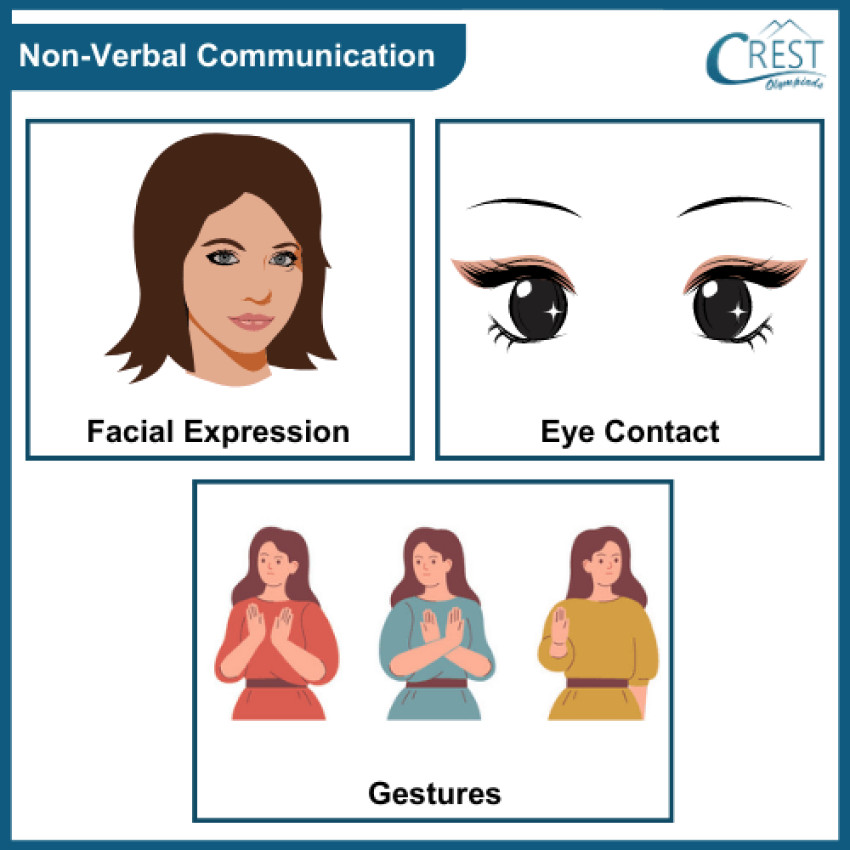
Types of Communication
Verbal Communication
Verbal communication is all about using words to express our thoughts and ideas. It involves speaking and writing.
1. Speaking
a) When we talk to someone face to face or over the phone, we are using verbal communication.
b) We use our voices to share information, ask questions, or have conversations.
2. Writing
a) Writing is another form of verbal communication.
b) It involves using words to convey our thoughts on paper or on a screen.
c) We write letters, stories, essays, and even text messages to communicate with others.
Non-Verbal Communication
Non-verbal communication is a way of expressing ourselves without using words. It involves body language, facial expressions, and other visual cues.
1. Body Language: Our body movements and gestures can say a lot without speaking a word.
For example, when we nod our heads to show agreement or shake our heads to show disagreement, it communicates our thoughts or feelings.
2. Facial Expressions: Our faces can express a wide range of emotions. Smiling when we're happy, frowning when we're sad, or raising an eyebrow to show surprise – these are all examples of using our facial expressions to communicate how we feel.
3. Visual Cues: Non-verbal communication can also include things we see, like pictures, symbols, or even colours.
For instance, a red traffic light tells us to stop, while a green light signals us to go.
Means of Communication
Means of communication are different ways that we use to send messages or talk to other people. They help us stay connected and share information with others. There are three common means of communication: Mass Communication, Postal Communication and Telecommunication.
Mass Communication
Mass communication is a way of sharing information with a large number of people at the same time. It helps us reach a wide audience. Some examples are:
1. Newspapers: Newspapers are printed publications that contain news, stories, and information about various topics. They are delivered to homes or can be bought from stores.
2. Radio: Radio broadcasts programs, music, and news that people can listen to.
3. Television: Television, or TV, shows us moving pictures and broadcasts programs, movies, news, and more. We can watch TV shows on a television set at home.
4. Magazines: Magazines are similar to newspapers, but they focus on specific topics like fashion, sports, or nature. They have articles, pictures, and stories.
Telecommunication
Telecommunication is a way of communicating over long distances using devices like phones or computers. Some examples are:
1. Telephone: A telephone allows us to talk to someone far away. We can hear their voice and they can hear ours.
We use telephones to have conversations with friends and family.
2. Internet: The internet is a big network of computers connected together. It helps us send and receive information quickly. We can use it to send emails, watch videos, play games, and do research.
3. Mobile Phones: Mobile phones, also called cell phones, are portable devices that let us make phone calls, send text messages, and use the internet.
We can carry them with us wherever we go.
Postal Communication
Postal communication involves sending messages, letters, or packages through the postal system.
1. Letters: We can write letters to friends, family, or people we want to communicate with. We put the letter in an envelope, write the address on it, stick a stamp to it, and then drop it in a mailbox. The postal service delivers the letter to the recipient.
2. Packages: Sometimes, we need to send things like gifts or important documents to someone far away. We can pack them in boxes or envelopes, write the address, and send them through the postal service.
These means of communication help us connect with others, share information, and stay in touch with people who are far away.


